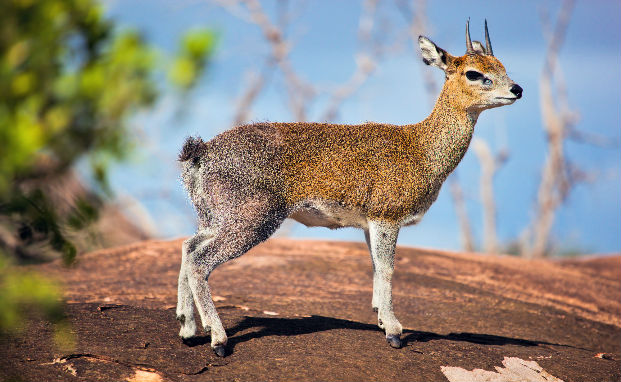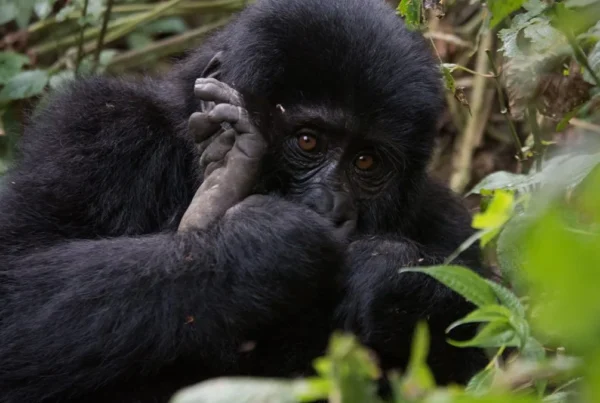Introduction to the Facts About the Klipspringer
In the rocky hills and rugged cliffs of eastern and southern Africa, a small, nimble antelope balances with astonishing precision—often seeming to defy gravity.
This elusive creature is the klipspringer (Oreotragus oreotragus), a species whose name literally means “rock jumper” in Afrikaans.
Despite its modest size, the klipspringer is packed with fascinating adaptations that make it a true marvel of mountain survival.
Its unique features and behaviors set it apart from other antelopes and make it a highlight for wildlife enthusiasts and naturalists.
Below are five deeply fascinating facts about this sure-footed sentinel of the cliffs.
Table of Contents
1. The Master of Vertical Terrain
The klipspringer thrives where few animals dare to tread—on steep, rocky outcrops and mountainous slopes.
These antelopes are exceptionally agile, capable of bounding up vertical faces and hopping between narrow ledges with ease.
Their compact bodies and short legs give them superior balance and maneuverability in rugged landscapes.
Unlike most antelopes that prefer open plains or forests, klipspringers specialize in elevated, rocky environments
where predators find it difficult to follow. This niche specialization helps them avoid lions, leopards, and wild dogs,
though they still have to watch out for eagles and caracals.
2. Hooves Made for Precision
One of the klipspringer’s most unique features is its specialized hooves. Unlike the wide hooves of plains-dwelling antelopes,
the klipspringer’s hooves are small, cylindrical, and rubbery-textured at the base.
These hooves allow the animal to stand on the very tips—like a ballet dancer en pointe.
This anatomical trait enables klipspringers to grip even the tiniest protrusions on rock surfaces, making them
one of the most agile antelopes in Africa. Their confident ability to walk along cliff edges just inches wide has fascinated biologists and safari-goers alike.
3. Monogamous and Loyal Mates (Facts About the Klipspringer)
In a departure from the harems and solitary lifestyles common in many antelope species, klipspringers form monogamous pairs that stay together year-round.
These pairs maintain a small territory, which they mark and defend cooperatively against intruders.
The pair rarely stray far from each other, often within just a few meters. While one forages, the other acts as a lookout on a higher perch.
If a predator approaches, the lookout gives a sharp, alarmed whistle and both disappear into the rocks in seconds.
This partnership-based survival strategy enhances their chances of evading danger in treacherous terrain.
4. Camouflage and Seclusion: Survival by Stealth
In addition to their rocky agility, klipspringers benefit from excellent natural camouflage.
Their yellowish-gray to olive-brown fur blends seamlessly with the granite and sandstone surfaces they inhabit.
When motionless, they are almost invisible to both predators and observers.
Klipspringers are primarily crepuscular—active during the early morning and late afternoon—when light levels are low, reducing the chances of being seen.
They also rely on stealth over speed; when threatened, they rarely run far, instead using sharp turns and narrow ledges to escape into difficult terrain.
5. A Unique Coat Unlike Any Other Antelope
One of the klipspringer’s most extraordinary features is its hollow, brittle fur.
Unlike the dense, solid hairs of other antelope, each hair on a klipspringer is tubular and spongy, providing insulation and cushioning.
This adaptation serves multiple purposes. It protects the skin from sharp rocks, helps with thermoregulation in exposed highlands,
and also acts as shock absorption during falls or rough landings. Interestingly, this fur texture gives the animal a “fluffy” appearance from a distance,
though it is quite coarse to the touch.
These unique hairs even help repel water and can trap a layer of air close to the body, assisting the klipspringer in maintaining body temperature across
the wide range of climates found in rocky highlands.
Facts About the Klipspringer #Facts About the Klipspringer Facts About the Klipspringer





 WildHorn Africa – Authentic and unforgettable tours across Africa, guided by local experts who know the land, wildlife, and culture best.
WildHorn Africa – Authentic and unforgettable tours across Africa, guided by local experts who know the land, wildlife, and culture best.


